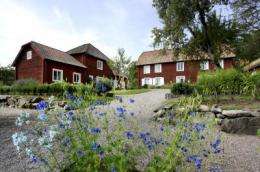Unique study isolates DNA from Linnaeus' botanical collections

(PhysOrg.com) -- Researchers at Uppsala University has succeeded in extracting long DNA fragments from dried, pressed plant material collected in the 1700s by Linnaeus' apprentice Adam Afzelius. It is hoped that the study, led by Associate Professor Katarina Andreasen, will shed light on whether plants growing today at Linnaeus' Hammarby estate outside Uppsala reflect the species cultivated by Linnaeus himself.
A large number of plants of uncertain provenance grow at Carl Linnaeus' Hammarby estate, a museum and popular tourist destination. Have they been present since Linnaeus' time? In addition to probing this question, the current study will test the limits of DNA-sequencing methods with regard to old plant material and has already demonstrated that it is possible to sequence plant material more than 200 years old. The study is now published in the scientific journal Taxon.
"This opens up a number of exciting research possibilities in connection with material from herbaria throughout the world", says Katarina Andreasen.
The researchers hopes to initiate corresponding DNA investigations of plant material from the garden at Hammarby as soon as possible.
"It would be fun, if we can show that the old material is genetically identical with the plants currently growing at Hammarby, to create a living herbarium for summer visitors to the garden", says Katarina Andreasen.
Linnaeus' significance for the science of systematic biology, as reflected in locations in Sweden (Uppsala and Smľland) and collection locations in seven other countries, is the focus of a World Heritage Site nomination. The foundations of systematic biology were laid by Carl Linnaeus through the aid of an extensive scientific network. If the nomination is approved by UNESCO preserved animals and plants will for the first time constitute a central aspect of a World Heritage Site.
More information: Read a summary of the article in the scientific journal Taxon.
Source: Uppsala University (news : web)

















